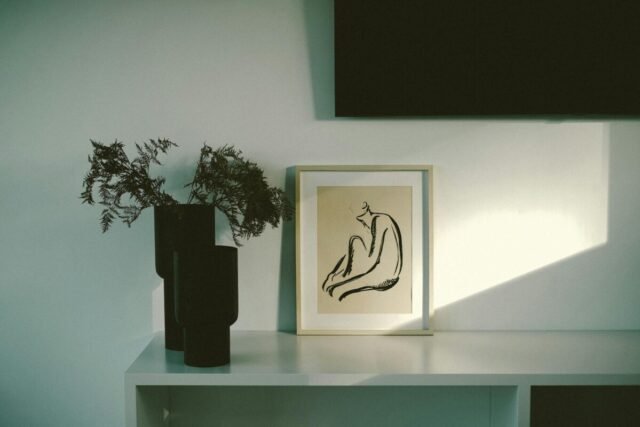Are you tired of paying exorbitant prices for custom picture framing? Do you have a collection of cherished memories or artwork that deserves to be beautifully displayed? Look no further than DIY picture framing! This beginner-friendly guide will walk you through the process of creating stunning, personalized frames that showcase your unique style and save you money in the process.
The Benefits of DIY Picture Framing
Before we dive into the nitty-gritty of how to frame pictures, let's explore the numerous benefits of taking on this rewarding project:
-
Cost savings: Professional framing services can be incredibly expensive, often costing hundreds of dollars for a single piece. By choosing to frame your own artwork, you can save a significant amount of money without sacrificing quality.
-
Customization: DIY picture framing allows you to create frames that perfectly complement your artwork and home decor. From the frame material and color to the mat board and embellishments, you have complete control over the final product.
-
Creative expression: Framing your own pictures is a wonderful opportunity to let your creativity shine. Experiment with different styles, materials, and techniques to create one-of-a-kind pieces that reflect your personality and artistic vision.
-
Sense of accomplishment: There's nothing quite like the satisfaction of displaying a beautifully framed piece that you created with your own hands. DIY picture framing gives you a sense of pride and accomplishment that comes with mastering a new skill.
Essential Picture Framing Supplies
To begin your DIY picture framing journey, you'll need to gather the following tools and materials:
- Tape measure or ruler
- Miter saw or miter box and hand saw
- Wood glue
- Clamps
- Sandpaper (various grits)
- Frame finish (paint, stain, varnish, etc.)
- Mat board (optional)
- Glass or acrylic glazing
- Picture hanging hardware (wire, D-rings, sawtooth hangers, etc.)
- Safety gear (eye protection, dust mask, gloves)
Having all your supplies ready before starting your project will ensure a smooth and efficient framing process.
Choosing Your Frame Material
One of the most exciting aspects of DIY picture framing is selecting the perfect material for your frame. Here are some popular options:
-
Wood: A classic and versatile choice, wood frames can be painted, stained, or left natural to suit any style. They are relatively easy to work with and are available in a variety of types, such as pine, oak, or maple.
-
Metal: For a sleek, modern look, metal frames are a great option. Aluminum and steel are common choices, and they can be finished in a range of colors or textures. While metal frames can be more challenging to work with, they offer a unique and sophisticated aesthetic.
-
Alternative materials: Get creative by upcycling items like old books, maps, or fabric to create one-of-a-kind frames. These unconventional materials add a personal touch and can be a great conversation starter.
When choosing your frame material, consider the style and colors of your artwork, as well as the overall design scheme of the room where the frame will be displayed.
Measuring and Cutting Your Frame
Accurate measurements and precise cuts are essential for a professional-looking frame. Follow these steps to ensure your frame pieces fit together perfectly:
-
Measure the height and width of your artwork, adding any desired mat board and frame overlap. It's a good idea to add 1/8" to 1/4" to each dimension to allow for slight variations in cutting.
-
If using a miter saw, set the blade to a 45-degree angle and carefully cut your frame pieces to size. Make sure to wear eye protection and follow all safety guidelines for your specific saw.
-
If using a miter box and hand saw, secure your frame piece in the miter box at a 45-degree angle and carefully saw along the guide. Take your time and use a steady hand to ensure clean, precise cuts.
-
Double-check that your frame pieces fit together snugly before proceeding. If necessary, make any adjustments by sanding or re-cutting the pieces.
Remember, measure twice and cut once! Precision is key for a polished, professional-looking frame.
Assembling Your Frame
With your frame pieces cut to size, it's time to assemble them into a complete frame:
-
Apply a thin, even layer of wood glue to the mitered edges of your frame pieces. Make sure to cover the entire surface for a strong bond.
-
Carefully align the pieces, ensuring that the corners are tight and flush. Use a damp cloth to wipe away any excess glue that may seep out.
-
Clamp the frame together, applying even pressure to all sides. Use protective pads or scrap wood between the clamps and frame to prevent dents or damage.
-
Allow the glue to dry completely according to the manufacturer's instructions. This typically takes several hours, so be patient and resist the temptation to remove the clamps too early.
Proper assembly is crucial for a sturdy, long-lasting frame that will protect and showcase your artwork for years to come.
Adding Finishing Touches
Now that your frame is assembled, it's time to add the finishing touches that will make it truly shine:
-
Sand the frame with progressively finer grits of sandpaper, starting with a medium grit (120-150) and working up to a fine grit (220-240). This will create a smooth, even surface for your finish.
-
Apply your desired finish, whether it's paint, stain, varnish, or a unique treatment like decoupage. Be sure to follow the manufacturer's instructions for application and drying times.
-
Let your creativity run wild by personalizing your frame with embellishments or decorative elements. Consider adding a decorative corner detail, a unique texture, or even a custom engraving.
A well-finished frame can elevate your artwork and complement your home decor, so take your time and enjoy the process of creating something truly special.
####### Matting and Glazing (Optional)
While not essential, adding a mat board and glazing can take your framed artwork to the next level:
-
Cut your mat board to size, leaving an even border around your artwork. A typical mat border is between 1.5" and 3", but feel free to adjust according to your preferences and the size of your piece.
-
Use a sharp utility knife and a straight edge to cut a clean, beveled window in your mat board. This will create a professional-looking opening that showcases your artwork.
-
Carefully place your artwork on the back of the mat board, ensuring it is centered and straight. Use acid-free tape or adhesive to secure the artwork in place.
-
Clean your glass or acrylic glazing thoroughly with a lint-free cloth to remove any dust or smudges. Place the glazing in the frame, followed by the matted artwork.
Matting and glazing not only protect your artwork from dust and damage but also add a polished, gallery-like appearance to your framed piece.
######## Hanging Your Masterpiece
The final step in the DIY picture framing process is hanging your framed artwork for all to admire:
-
Choose the appropriate hanging hardware for your frame size and weight. Picture wire is a popular choice for larger frames, while D-rings or sawtooth hangers work well for smaller pieces.
-
Securely attach the hardware to the back of your frame, ensuring it is centered and level. For picture wire, leave a slight slack to allow for easy hanging and adjustment.
-
Find the perfect spot to display your framed piece, taking into consideration factors like lighting, wall space, and the overall design of the room.
-
Use a level to ensure your frame is straight, and adjust as necessary. If hanging multiple frames, use a measuring tape and level to create an even, balanced arrangement.
With your artwork beautifully framed and hung, take a step back and admire your handiwork. You've created a stunning, one-of-a-kind piece that reflects your personal style and showcases your cherished memories or artwork.
Conclusion
DIY picture framing is a rewarding and cost-effective way to display your cherished memories and artwork. By following this step-by-step guide, you can create stunning, custom frames that showcase your personal style and save you money in the process.
As you embark on your DIY picture framing journey, remember to take your time, measure carefully, and let your creativity flow. Don't be afraid to experiment with different materials, finishes, and embellishments to create truly unique pieces that reflect your personality and artistic vision.
We encourage you to share your DIY picture framing creations with others, whether it's through social media or by proudly displaying them in your home. Your handcrafted frames are sure to impress and inspire others to try their hand at this fun and accessible craft.
So gather your supplies, choose your favorite artwork or photos, and start framing! With a little patience and practice, you'll be creating beautiful, professional-looking frames in no time. Happy framing!
Frequently Asked Questions
-
What if I don't have access to a miter saw?
If you don't have a miter saw, you can use a miter box and hand saw to cut your frame pieces. While it may take a bit more time and effort, a miter box is an affordable alternative that can still produce accurate, 45-degree cuts. -
Can I use a different type of glue besides wood glue?
While wood glue is recommended for its strength and durability, you can also use other types of glue, such as super glue or epoxy. However, be sure to choose a glue that is appropriate for your frame material and follow the manufacturer's instructions for best results. -
How do I choose the right mat board color?
When selecting a mat board color, consider the colors in your artwork and the overall style of your frame. A neutral color like white or off-white is a classic choice that works well with most pieces, while a bolder color can add a pop of contrast or complement specific hues in your artwork. -
Can I frame multiple pictures in one frame?
Yes! Creating a collage or gallery-style frame is a great way to showcase multiple pictures or artwork. Simply adjust your measurements and mat board openings to accommodate the number and size of your pieces. -
How do I clean my framed artwork?
To clean your framed artwork, start by dusting the frame and glazing with a soft, dry cloth. If necessary, you can use a slightly damp cloth to remove stubborn dirt or smudges, but be careful not to let any moisture seep behind the glazing or onto the artwork itself. Avoid using harsh chemicals or abrasive cleaners, which can damage the frame or artwork.
By following this comprehensive guide and exploring your own creative ideas, you'll be well on your way to creating beautiful, personalized picture frames that showcase your cherished memories and artwork. Happy framing!































